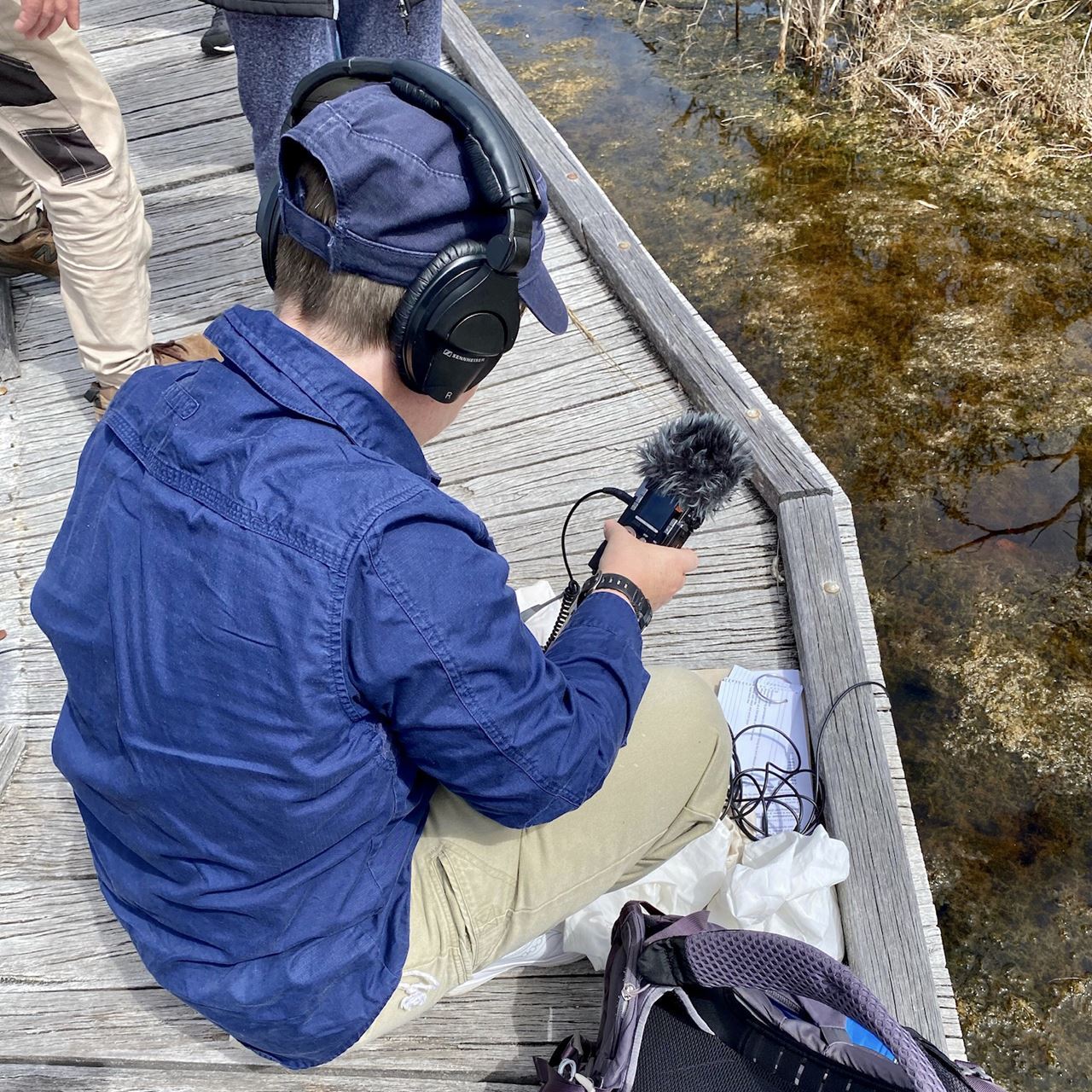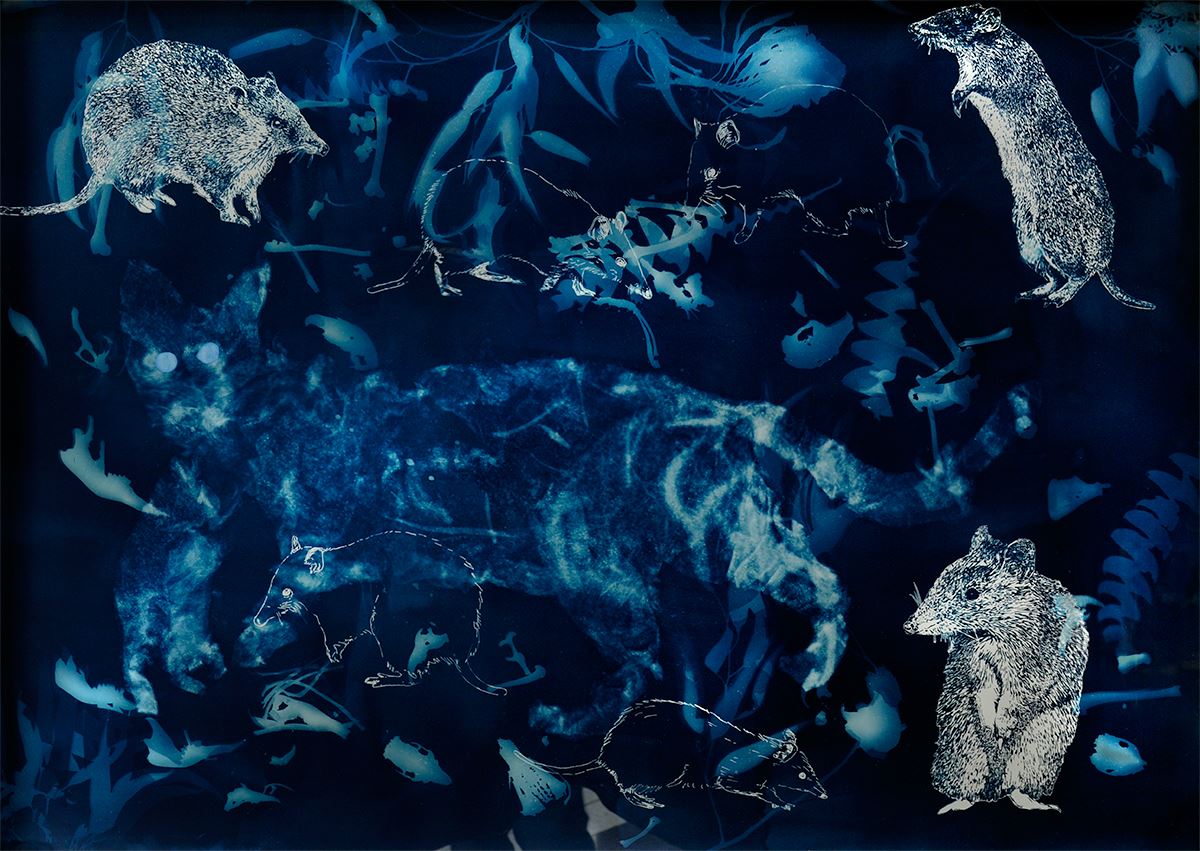
MEMBER SPOTLIGHT
November 28, 2022
This week we recognize Perdita Phillips, based in Australia, and her thirty plus year practice of imagining environmental futures.
Cyanotypes (above) are an early photographic technique invented by astronomer Sir John Herschel in 1842. Paper is sensitized and then exposed to sunlight to turn uncovered areas of the image blue. In Phillips' work Natura Autem Vivit, Sed Occisio de Felibus, natural materials including bones have been combined with hand-drawn stencils. 10% of endemic Australian land mammal fauna are extinction and 21% of the 273 species are now threatened. Quendas (top and bottom right, above) were once found throughout the southwest of Australia. But, unlike many other local marsupials, they still survive in pockets in the urban areas of Perth. Nature is alive, but [for] the killing of cats. click images for more info
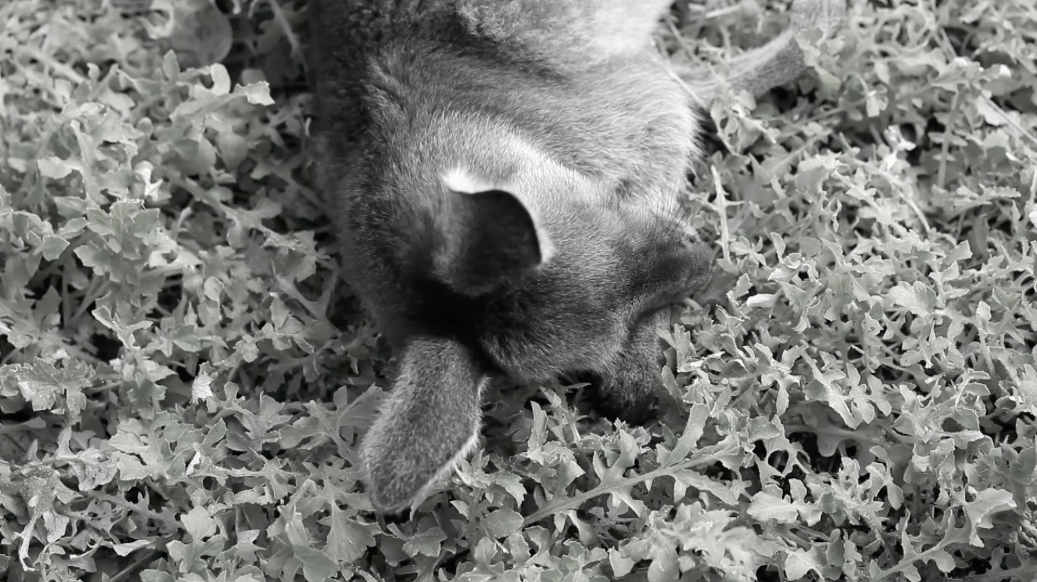
"Anticipatory terrain (above) is about dreams and nightmares and the night landscape as a place of uncertainty and potential. The video installation contains footage from Perth’s urban wetlands, plotting the shadowy traces of Western Grey Kangaroos, which may or may not inhabit various locations. It sprang from a re-envisaging of Goya’s El sueño de la razón produce monstruos (The Sleep of Reason Produces Monsters) where the positions of dreamer and dreams might be reversed and how, along with an ethical commitment to let animals exist in their own worlds, one should also recognise how other animals are essential to our own (entangled) being. Do landscapes, themselves, dream? That is a much harder question to answer, but even posing the question alerts us to the possibility of not the singular dream of twentieth-century modernist development, but of dreams as multiple, open-ended assemblages. And thus “we might look around to notice this strange new world, and we might stretch our imaginations to grasp its contours” (Tsing, 2015, p. 3)."
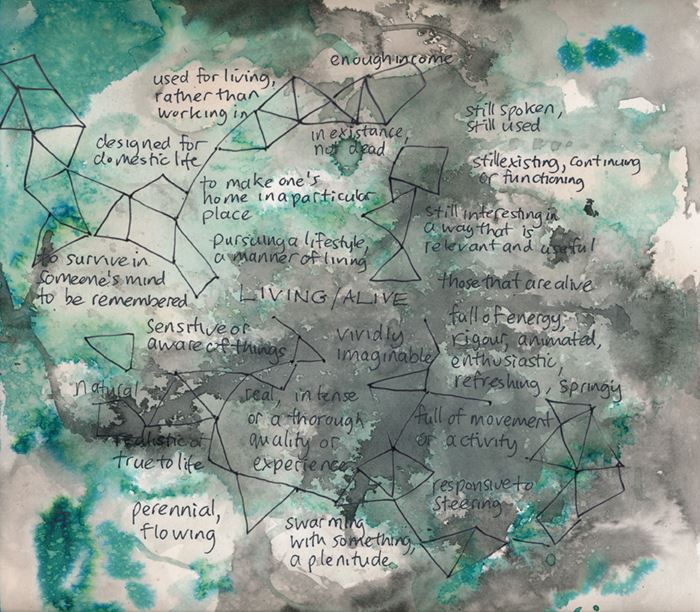
Artistic practices and ecoaesthetics in post-sustainable worlds is a chapter written by Phillips (above), included in the book, An introduction to sustainability and aesthetics: The arts and design for the environment (2015). This chapter considers the question of sustainability and aesthetics from the perspective of an artist’s critical reflection on contemporary environmental art practice. It adopts a specifically concretionary approach, examining the way concepts from different disciplines might be able to generate creative and speculative aesthetic possibilities. It considers scientific ecology alongside allusionsto Guattari’s (2000) ‘three ecologies’. It argues that art and aesthetics has a role in ‘unsolidifying’ sustainability. Through reference to a practice-based example, it concludes with a call for an aesthetics of action in the face of the inevitable uncertainties inherent in an ecological worldview.
Wattie (below) is a short video meditation included in Embodied Forest, in 2021, that shows crown shyness as each tree weaves its own space facing the sun. Wattie (Taxandria juniperina) are thin spindly trees that live in watery landscapes, in single age stands at Tjuirtgellong (Lake Seppings) in Albany/ Kinjarling, a rural city in Western Australia on Menang Noongar Boodja. They use their strength in numbers to deflect southerly storms. Once extensive, the Wattie thickets were sponge landscapes that sucked up water over winter and let it slowly seep out over the dry summers of a Mediterranean climate. Phillips writes, "sensing soundscapes is an embodied practice of attunement that can decentre settler cultures."
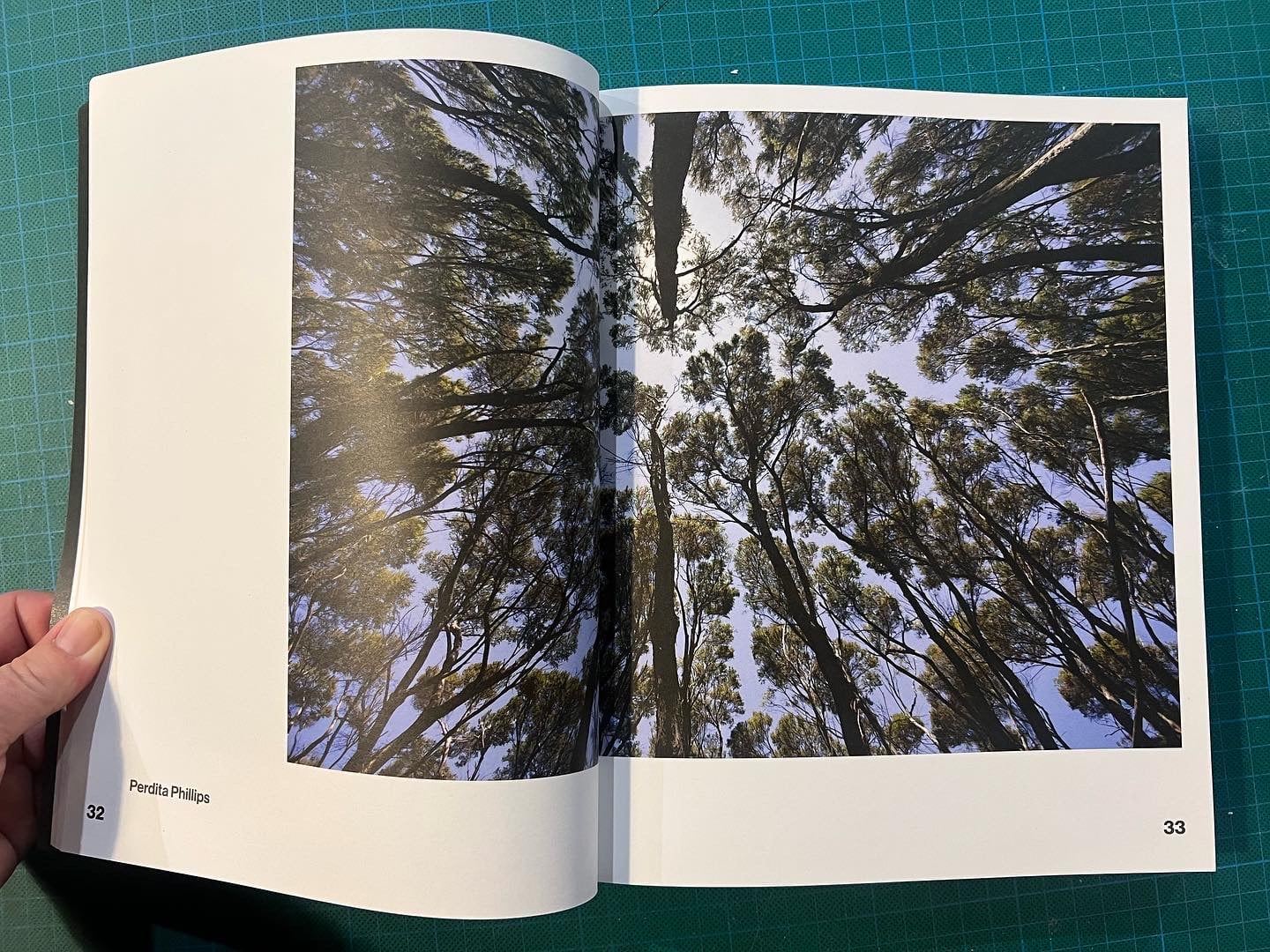
We Must Catch Up, 2017/2019 (below) was a performance/ installation that ran 9:30am – 5pm daily, for one week at Paper Mountain in Northbridge, Western Australia. "In confusing and compromising times, we must take action despite being surrounded by doubt. We Must Catch Up explores the point of talking through doubt and progressing towards action. In this interactive exhibition, participants experienced a time of reflection in a world that needs thinkers and people who absorb and react to the mad auratic flows that surround us." Meanwhile, other gallery visitors were able to observe or overhear conversations of warmth and positive exchange. Later, the mountain was rebuilt at The Farm, Margaret River, 2019, allows visitors time to catch up surrounded by paddocks and peppermint (Wanil) trees on the land of the Wadandi People in the South West Boojarah region.
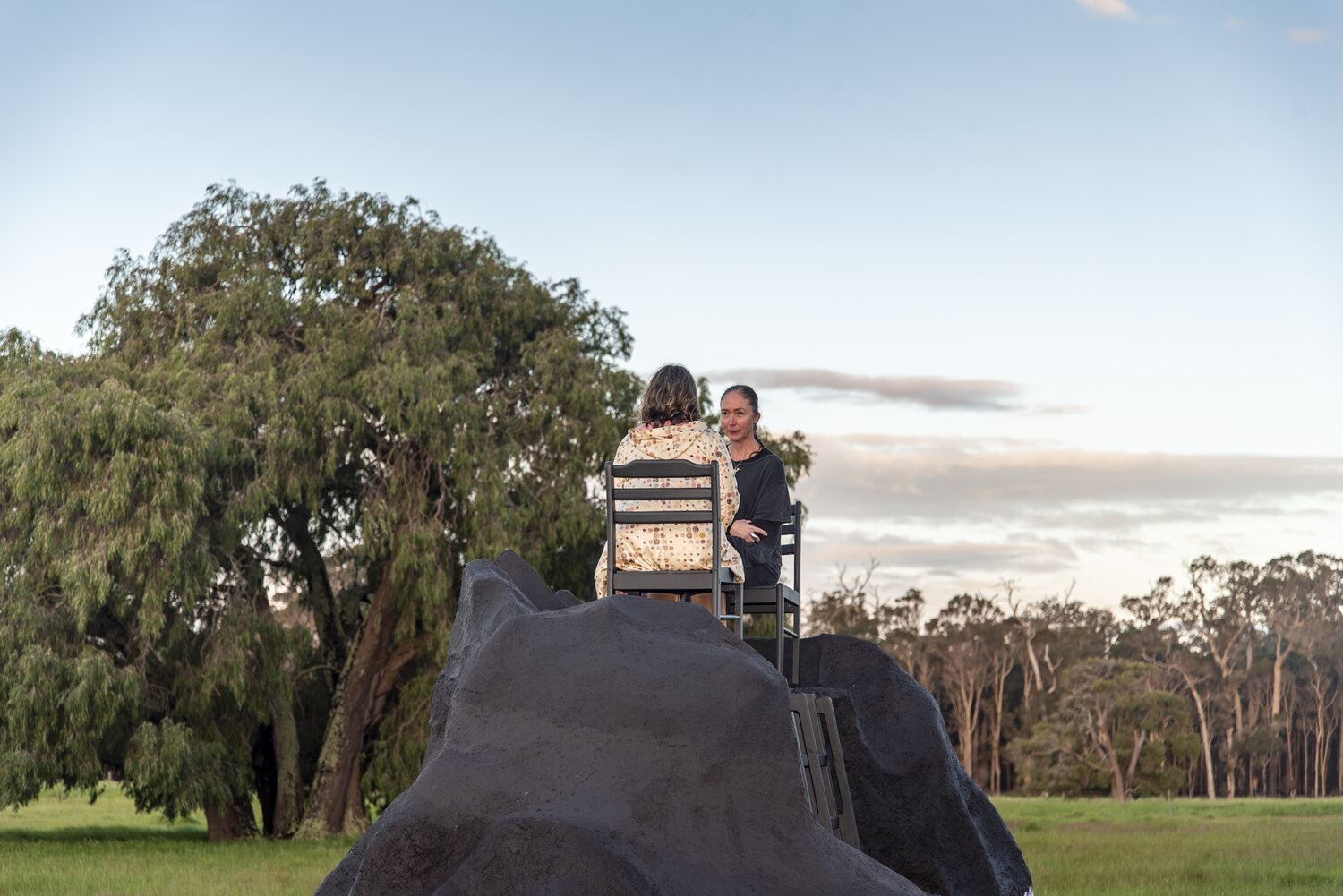
Perdita Phillips is an interdisciplinary artist born and raised on unceded Whadjuk Nyoongar Boodja. After years of wrestling with the ideas of beauty and wildness, Phillips decided that things are not simple: they are complex and contested and worth fighting for. This is what she calls the both/and condition: how to live in an impure and compromised world. Perdy has employed many different media including walking, mapping, ephemeral outdoor works/ situations (eclogues), photographs/video and spatial sound. Her work is marked by a continuing interest in the relationships between humans and nonhuman others (rocks, plants, animals, ecosystem processes). Beginning in 1992, Phillips’ commitment to ‘ecosystemic thinking’ has led her to work with material and conceptual networks as diverse as drains, minerals, termites and bowerbirds. Originally training in environmental science, she completed a MA at Goldsmiths College 1997-1999. Phillips’ practice-based PhD (2003-2006) fieldwork/fieldwalking was recognized as top three annual abstracts in the Leonardo Abstracts Service Database. She has received two Inter Arts Grants from the Australia Council and has contributed to many interdisciplinary forums. Phillips has recently contributed to, and edited, Tectonics: bringing together artistic practices united by lithic thinking beyond human scales (2021, Lethologica Press), the both/and issue of CSPA Quarterly (issue 36, 2022) and Swamphen: A Journal of Cultural Ecology issue 8 on Particular Planetary Aesthetics (2022, co-edited). Other published books include Fossil III (2019, as part of the Lost Rocks project). Current art projects revolve around geological time, extractivism and contemporary colonial unforgetting. www.perditaphillips.com
Featured Images (top to bottom): ©Perdita Phillips, Natura Autem Vivit, Sed Occisio de Felibus, 2019, cyanotype print, City of Joondalup, Invitational Art Prize, Western Australia; Anticipatory terrain (capricious dreams), 2017, video installation; Artistic Practices and Ecoaesthetics in Post-sustainable Worlds, chapter in Crouch, C. Kaye, N and Crouch, J. An introduction to sustainability and aesthetics: The arts and design for the environment (55-68) Boca Raton, Florida: Brown Walker Press; Wattie, 2018, looped video, Wattie (Taxandria juniperina) at Tjurltgellong (Lake Seppings), Kinjarling/Albany, on the lands of the Menang people, Western Australia, included in Embodied Forest 2021; We Must Catch Up, 2017/2019, performance/ installation at Paper Mountain and The Farm, Western Australia (photo Christopher Young); Perdita Phillips at the Flow walkshop 2021, listening to swamp water by Jane Finlay (below). 